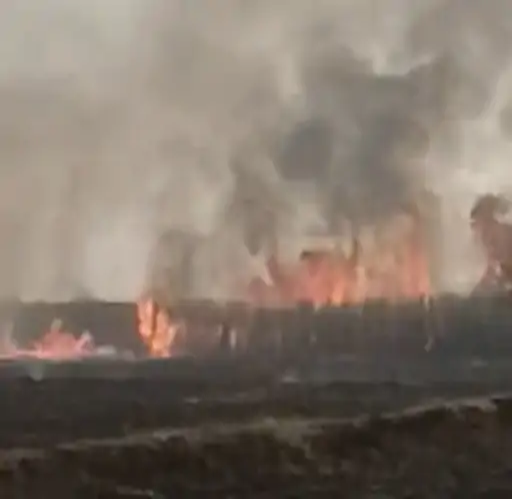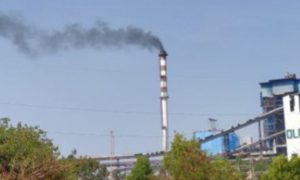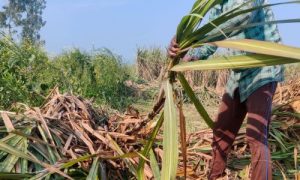Tonnes of ash from sugar cane trash burning aworry

Sugarcane farmers in Maharashtra are urged to stop burning cane trash during harvest, as it creates harmful ash and environmental damage. District collectors, including Siddharam Salimath, warn that action will be taken if mills don’t curb the practice. Studies show trash burning damages soil health, harms nearby crops like grapes, and leads to nutrient loss. Experts recommend alternative methods for trash management, such as using liquid cultures and incorporating residues to improve soil and crop yield.
Kolhapur: Sugar cane harvest season is in full swing in the state. Amid the brisk work, there is a tinge of worry. District collectors across Maharashtra recently appealed to farmers and labourers not to burn sugar cane trash in the field during harvesting that leaves behind tonnes of ash. Burning trash is prevalent in almost 90% of the 10 lakh hectares under sugar cane cultivation in the state, prompting the caution note.
Among the collectors to have made the appeal is Ahilyanagar district collector Siddharam Salimath. He recently issued a warning to cane farmers and labourers. He has told the mills to refrain farmers from burning trash before harvest. He said the practice is followed as an easy way to deal with the trash. “To begin with, we have asked sugar mills to refrain from allowing workers to burn the trash before harvesting, or else we will have to take action as per environmental laws,” he said.
A study by Vasantdada Sugar Institute in Pune shows that trash burning leaves 500 kg of ash per hectare. Burning of trash leads to release of large amount of particulate matter and emission of the carbon. Experts said that organic matter is lost and the intense heat kills favourable soil microorganisms and earthworms. The study suggests that all these undesirable effects on soil, environment, and the loss of nutrients can be avoided by in-situ sugar cane trash management.
The impact of the ash generated through trash burning can be felt in houses, terraces near the sugar cane fields. It is also felt on other crops, such as grapes cultivated nearby. The ash is deposited on the grape berries and sticks to them, reducing the shine of the berries. Such grapes fetch a lower price from traders. Pradip Suryawanshi, grape farmer from Bhilawadi of Sangli district, said the trash burning in the nearby sugar cane fields causes burning of the grape berries and leaves mark on them.
Experts explained that sugar cane is a long-duration and exhaustive crop that produces a large amount of biomass and also removes a considerable amount of nutrients from the soil for its normal growth and development. This needs to be replenished for better produce every time. The Indian Council of Agriculture Research promotes the incorporation of sugar cane crop residue as a component of integrated nutrient management.
Deputy director of agriculture Namdev Parit said, “We suggest the farmers keep trash in alternate furrows and water the field in non-trash furrows. It helps farmers save 50% on water and electricity. We also have found an increase in per acre yield by four to six tonnes, which is nearly 12,000 to 18,000 as per the
current price. Not just that, it helps address nutritional deficiencies in consumers ultimately by restoring the nutrients in the produce.”
Other ways to deal with the trash have been suggested by the Institute. Sudha Bodke, scientist and head of agriculture microbiology at the Institute, said they have developed a liquid culture which, when mixed in 200 litres of water and sprayed, decomposes the trash quickly.
To read more about Sugar Industry continue reading Agriinsite.com
















